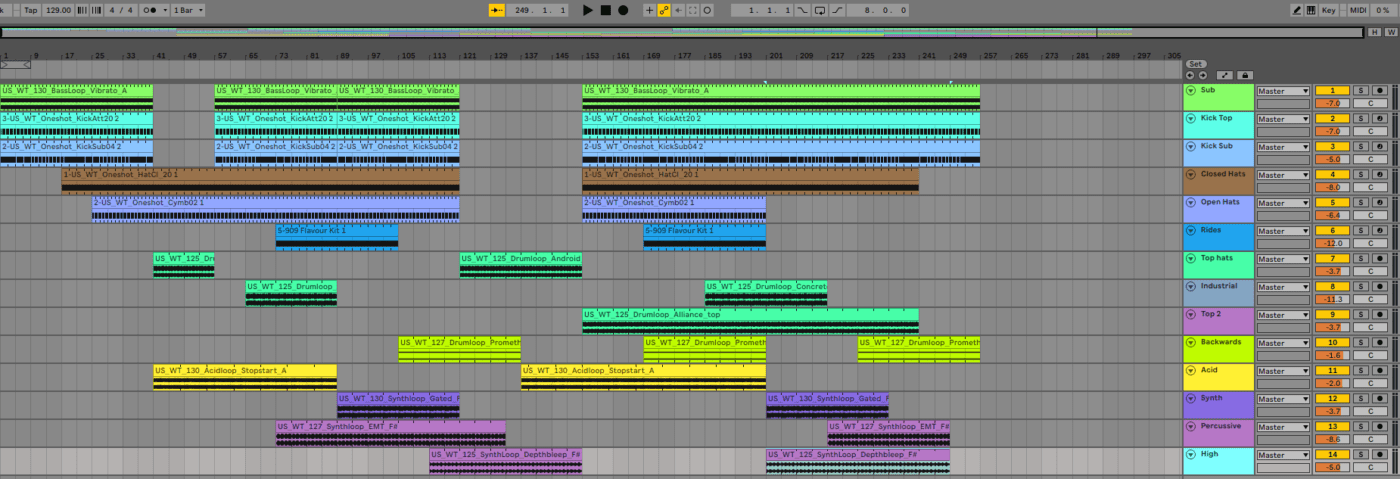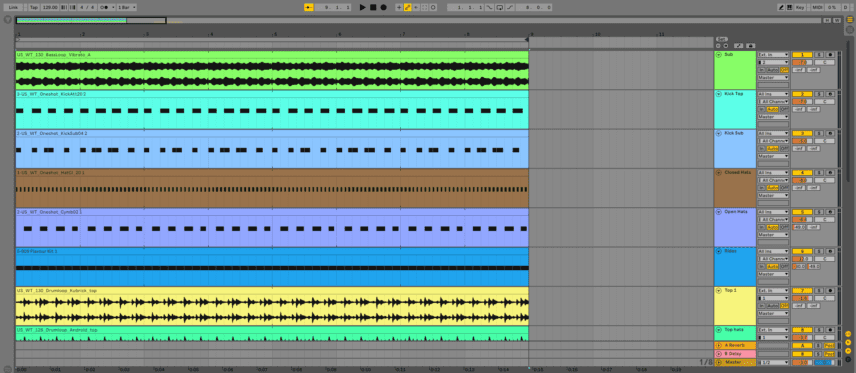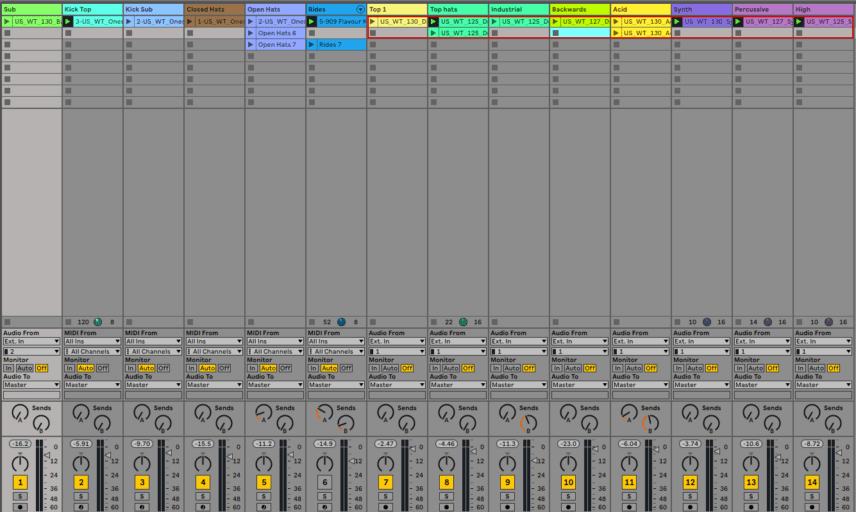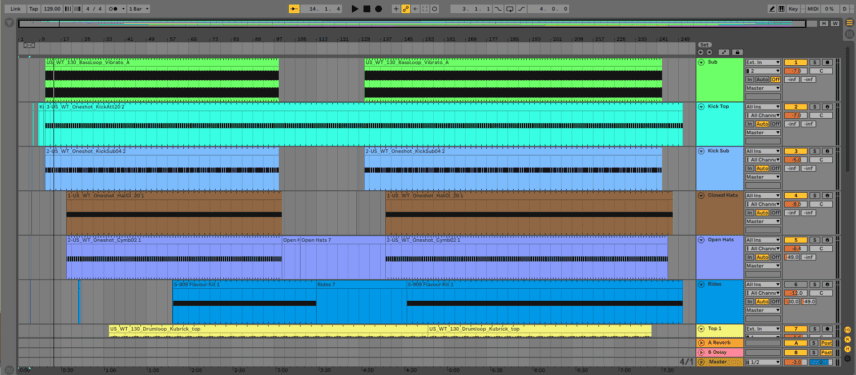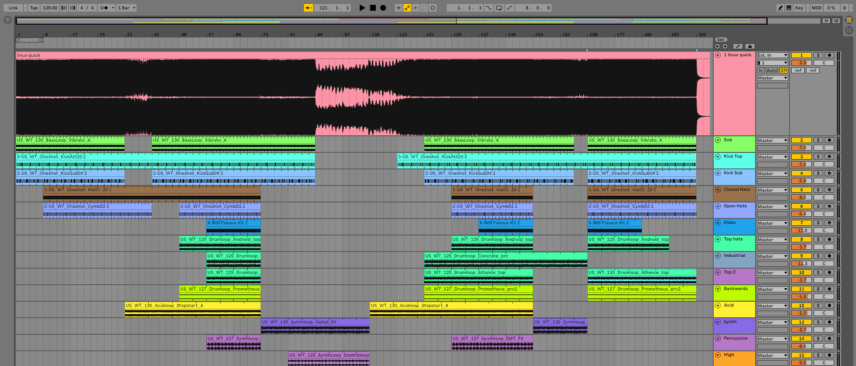In this tutorial, we show you some strategies for breaking out of the dreaded loop of despair and turning your idea into a full song.
We’ve all been there. You’ve worked hard, programming beats, writing basslines, and tweaking synths. You’ve got a banging loop and it sounds so hot, you can’t stop listening to it. You sit there for hours, muting and unmuting parts, tweaking filters, and just generally loving it. But at some point inertia sets in and you just can’t seem to take the next step of turning your idea into an arrangement.
It’s hard, it really is. That loop is like a black hole, sucking you in with its intense, serotonin-spiking gravity. It can be intimidating too, all that empty space stretching out to the right in the Arrangement View.
It doesn’t matter what DAW you’re using or what genre you work in, going from loop stage to arrangement stage can be daunting. However, at some point, we all need to break out of the loop. Recording a loop to Instagram is alright, but wouldn’t you rather hear it played in a club? For that, you need to explode it out into a fully formed song.
But how? How to escape the gravity well that is the never-ending loop?
In this piece, we’ll look at four ways to break out of the loop and start thinking in terms of arrangement. This piece will not tell you the best way to arrange a song—only you and your song can decide that. Every song is different, after all. It will, however, hopefully give you the inspiration you need to turn your idea into a full-fledged track that can be played in a club or car.
For our example song, we’ve used the Warehouse Techno pack from UNDRGRND Sounds, as well as rhythms that we programmed ourselves. We’re shooting for an acid techno vibe.
Here’s our loop. It sounds pretty good but we’re aching to turn it into a full song.
Keep in mind that it hasn’t been mixed yet. One thing at a time. We can do that after we’re finished with the arrangement.
As always, click any image to see a larger version.
Now, on the count of three, turn off loop mode, and let’s get arranging. Ready? One, two, three…
1 – Jam It Out
As the name implies, Ableton Live is not just a production DAW but is also meant for live performance. With its Session View, it’s a toddle to jam out ideas and turn your loop into a rough song.
First, make sure you have all tracks in the Session View disarmed and Cycle (loop) mode is likewise off on the Arrangement page. Next, hit record and start launching clips. Regions will automatically appear in their corresponding places in the Arrangement View.
Jamming with clips is perfectly doable with a mouse but it’s a bit easier with a dedicated controller like Push. You can launch and disable multiple clips simultaneously and have more control over what’s happening at any time. It’s also a heck of a lot of fun. You’re making a dance song—why not get out of your chair and dance while you do it? It may sound silly but you’ll have a much better feel for what makes people dance if you’re also up and moving around.
Jamming with clips can also be a great way to get a feel for how the individual elements of your song work together. You may find that some parts may clash a bit when played together. No worries. After the jam, sit back down and move the newly generated parts around into a song that sounds good.
Lastly, don’t feel like you have to execute the perfect track when jamming. Jamming is just a fun way to get ideas down. Many bands use jamming as a way to inspire songwriting. There’s no reason it can’t work for us too.
An excerpt from the jam. It’s rough but that’s OK. The point is to get arrangement ideas flowing.
2 – Copy It Out
One hindrance to breaking out of the loop is understanding song structure. If you’re making club music, how long should you make the intro? When should the first drop happen? What about breakdowns, where do those go? Or, if you’re working in more traditional genres like pop or R&B, what kind of song structure should you use?
The bad news is, every song is different. There’s no one size fits all approach. (And thank God. How boring would music be if every song was exactly the same?)
The good news is, there’s a wealth of amazing songs already out there to draw inspiration from. There’s nothing wrong with learning from the masters. Think of it as a master/apprentice relationship without all the downsides like fetching tea and cleaning toilets.
Choose a song that you think is a top example in the genre you’re going for, and insert it into an audio track at the top of your DAW. We’ve chosen Linux Quick’s ‘Room 2 Move’ (ROBPM Rmx), one that we featured in a recent Deconstructed. We love the arrangement of this tune, and, as we’re after a similar acid techno vibe, it seemed the perfect one to draw inspiration from.
Go through the song, listening to how the artist adds and subtracts sounds to build tension and create a vibe. Copy what they do. When they drop in a kick, you do the same. When they cut the bass, do so as well. Keep going until you’ve worked your way through the entire track. Then, mute the song and see how your arrangement sounds. You may need to extend or shorten some sections but that’s fine. Your song is unique and will have its own needs.
Using a reference track can also be helpful for picking up tips for transitions, mixing, and mastering, the next steps in the song-writing process. Think of it as your own, free masterclass.
An excerpt from this arrangement. The lack of transitions is apparent but we’re not worrying about that yet. The point is to get things blocked out first.
3 – Turn It Out
Music is built around bars, or segments of time corresponding to a specific number of beats. If our kick drums are programmed in 1/4-notes (and they usually are), then four beats makes one bar. Dance music (and most other popular forms of music) tend to be arranged in patterns of eight or 16 bars. There’s no rule that says it has to be done this way, and there are plenty of songs that don’t adhere to this formula, but in general, music repeats in clusters of eight or 16. It’s likely your loop is already this length as well.
Whether listeners are conscious of this or not, most people have a feel for when something in a song is going to change. While there’s something to be said for subverting expectations, in general, listeners like it when music follows the patterns they’re accustomed to. This is especially true of DJs, who keep track of bars in their head when mixing and count on regularity to make transitions.
You can use this as a way to help layout your song. Start with the kick drum and continue adding new musical elements every eight or 16 bars. This slow build is a classic arrangement style for dance music and is a great way to familiarize yourself with song structure. Keep going until you reach the first breakdown, and drop out the percussion. bring everything back for your first drop, take it out for the second breakdown, and bring it all back for the second drop. Finally, do the reverse of the beginning, subtracting elements until the song ends.
In music theory, a turnaround is when a chord progression finishes and circles back to a starting point. There’s a feeling of completion when we’re brought back to the beginning of the progression or musical idea. By staging our arrangement in groups of eight or 16 bars, each time we complete a section, we turn around and come back to the beginning of our idea and start again. Building a song in this way helps create a satisfying experience for the listener.
Once you’re comfortable with eight- and 16-bar sections you can try shortening or lengthening them. Of course, the genre you’re working in will also influence these decisions.
An excerpt from this exercise, with an audible change.
4 – Mark It Out
All that empty real estate to the right of your loop can be pretty daunting. It’s so open, so vast, so empty. It doesn’t have to be. There’s no rule that says you must start with a blank slate to make your song, so why not put some markers in place to help guide you?
Create markers along the top of the Arrangement View to give shape to your arrangement. The actual markers you use will largely depend on the genre you’re working in, but it could look something like this.
- Dance music: Intro, Breakdown 1, Drop 1, Breakdown 2, Drop 2, Cool Down, Outro
- Pop music: Intro, Verse 1, Chorus 1, Verse 2, Chorus 2, Solo, Verse 3, Chorus 3, Outro
Of course, you’re not beholden to these markers. You can (and should) move them to conform to the arrangement your song eventually takes. They’re just there to give you a starting point and get over the psychological hurdle of the empty Arrangement View.
Feel free to save this as a template to use as a head start next time. However, with practice and experience, and familiarity with song structure, breaking out of the loop will become easier and easier to do.
An excerpt from our arrangement.
